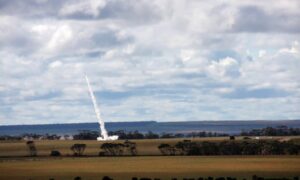UK Study Calculates Risk Of Being Killed By Space Junk
3rd Aug 2022
A UK study has looked at the likelihood of fatal casualties caused by space junk. In the study ‘Unnecessary risks created by uncontrolled rocket reentries’, researchers determined that rocket bodies are three times more likely to land at the latitudes of Bangladesh and Indonesia than in Russia, China, or the United States.
Do we need to start taking the risk of space junk more seriously?
The study, published in Nature Astronomy, shows the probability of casualties caused by falling rocket parts over the next decade.
Debris rains down on us from space every minute of the day. It’s a hazard most do not think about or are aware of.
The microscopic particles from comets and asteroids patter down through the atmosphere, settling on the Earth’s surface without notice. This creates approximately 40,000 tonnes of dust per year.
While this is not an issue for us, this debris can cause damage to spacecraft.
The new study looks at artificial space debris. In particular, it focuses on the uncontrolled arrival of items such as spent rocket stages.
The findings of the latest space debris study
The authors estimated where pieces of space junk would land when they fall back to Earth. They did this by reviewing three decades worth of past satellite data. The team also built mathematical models of orbits and inclinations of rocket parts in space and the population density beneath them.
They discovered a small yet significant risk of space debris parts re-entering over the next ten years. This is more likely to occur over southern latitudes rather than northern ones.
The study determined that rocket bodies are roughly three times more likely to land at the latitudes of Lagos in Nigeria, Dhaka in Bangladesh, or Jakarta in Indonesia, as opposed to Moscow in Russia, Beijing in China, or New York in the US.
A “casualty expectation” over the next ten years due to uncontrolled rocket re-entries was also calculated, i.e., the risk to human life.
They determined there is a 10 per cent probability of a one or more casualties during the next ten years, on average, assuming that every re-entry spreads lethal debris over a ten square metre area.







Thank you for your comment! It will be visible on the site after moderation.